Dolice 2024-11-05
Dolice Railway Station near Stargard.
Geographic coordinates: 53.198N 15.210E. Elevation 40.00 m (131.23 ft). Address DWORCOWA 11, 73-115 DOLICE.
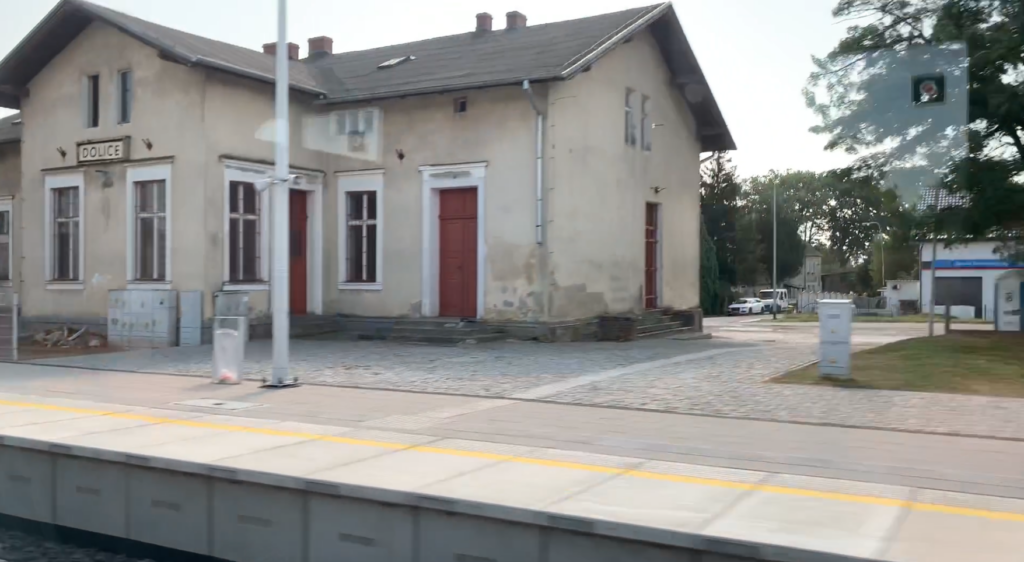
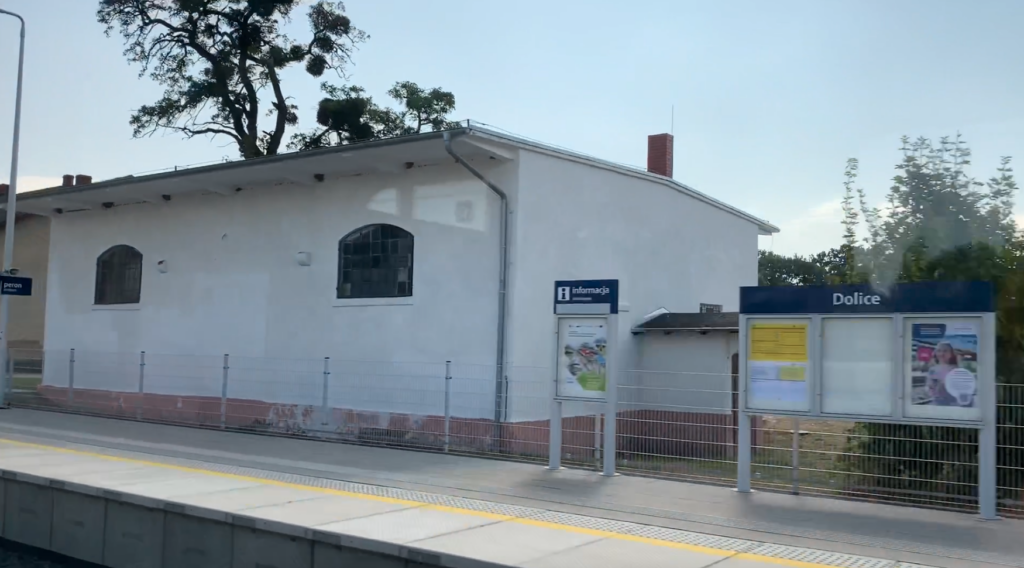
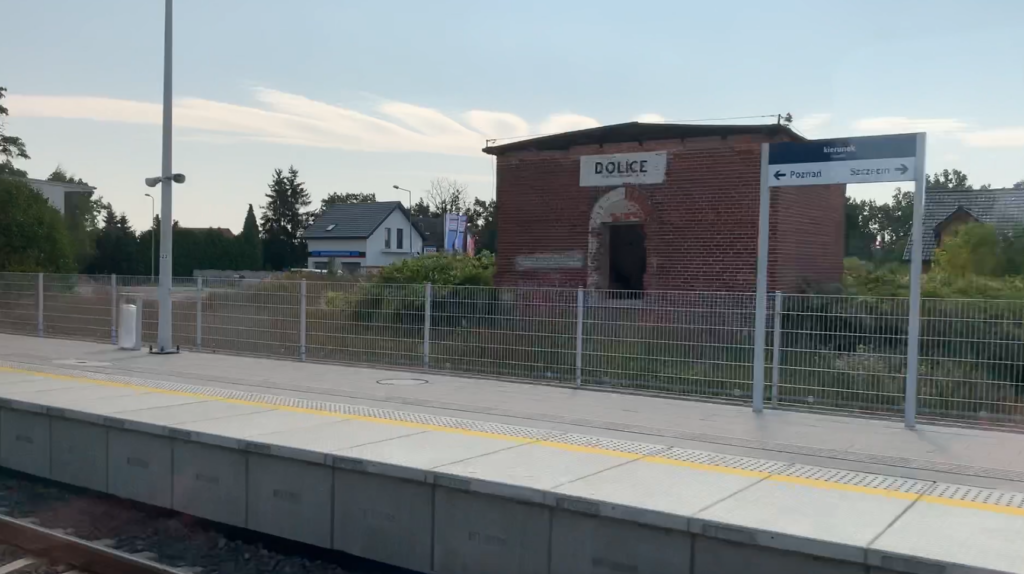
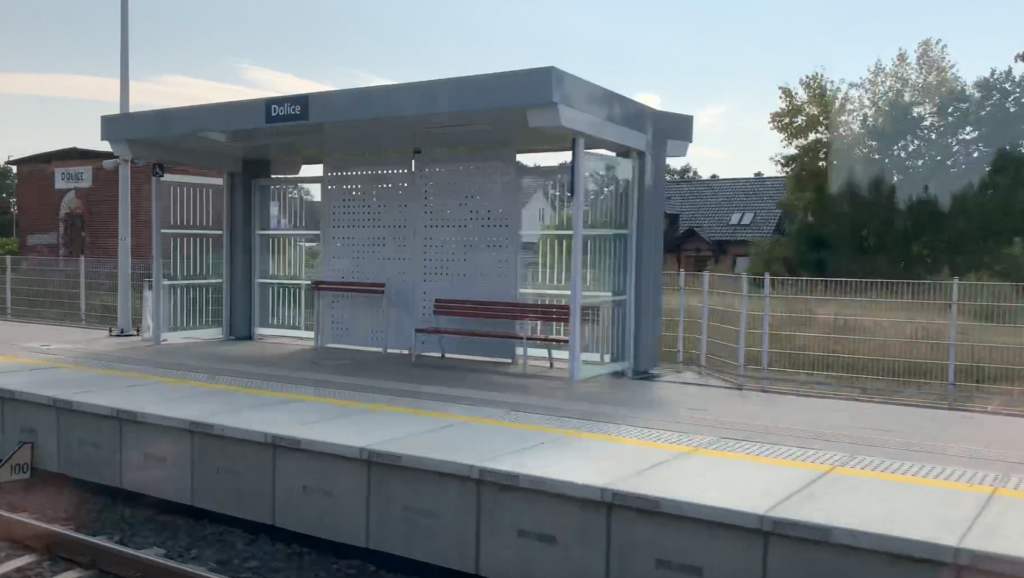
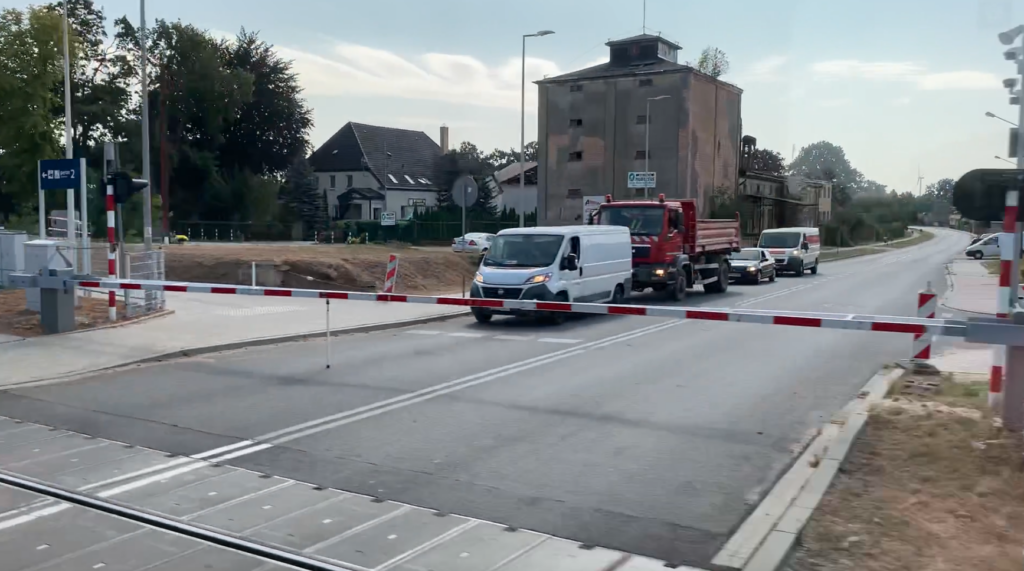
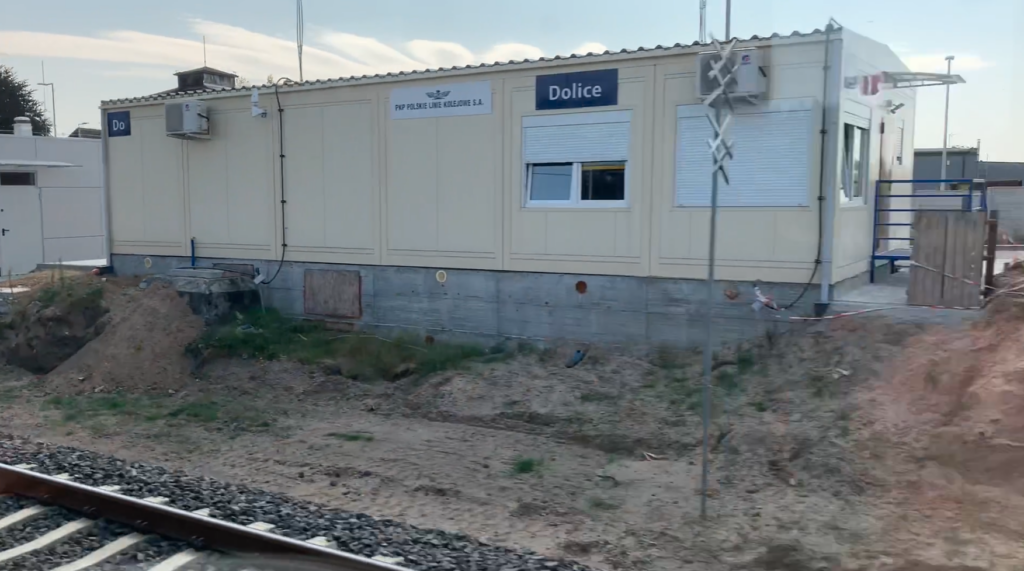
The village of Dolice.
Dolice is a village in Poland, in the West Pomeranian Voivodeship, in the Stargard district, Dolice commune. The population of the village is 1,783 inhabitants in 2022. From Dolice to Stargard is 22 km, to Szczecin is 60 km, to Krzyż Wielkopolski is 74 km, to Poznań is 161 km, to Warsaw is 448 km. Dolice (in Germanic Dölitz) is mentioned in 1282, as a village owned by the monastery in Kołbacz, OO Cistercians. In the 18th century, there was a farm and a water mill here. There were also 27 farms, a forge and a carpentry shop.
In 1847, a railway line from Stargard was brought to Dolice. Next to the railway station, which also housed a postal forwarding office, a goods reloading siding was built, which was used by the local population. The railway contributed to the development of the village. A distillery, a brickyard, an inn, a post office, an elementary school, a medical point and a pharmacy, a police station and even a nursery were built. Around 1920, a housing estate for railway workers was built. The housing estate consisted of several two-story residential houses, with a developed attic, connected by single-story farm buildings. Until World War II, Dolice had two mills, three bakeries, a forge, a carpentry shop, a sawmill, tailoring shops, a hairdresser and others. The village had 1,669 inhabitants.
On September 1, 1939, the Germanic brothers, together with the Muscovite brothers, invaded the Republic of Poland. Before the outbreak of the war, several forced labor camps were organized in the Dolice area. Initially for Germanic criminal prisoners, and eventually for prisoners of war. One of the camps was located on Lake Płoń, and another on the farm. Dolice was occupied by the Muscovites, with the 1st Army of the Polish People’s Army at their side, on February 9, 1945. The Soviets established a commandant’s office in Dolice, relying on the Germanic administrative division. By July 1945, all the native inhabitants of Dolice had been expelled to the west. The Soviets were in Dolice until 1948, although they officially handed over power to the Polish side in June 1945. Near the railway station, barracks were set up where machines and equipment sent by rail to Moscow were sorted. The facility consisted of two parts. On the northern side of the tracks, where the Social Welfare Home is now (2024), there were barracks. The second part was located in the north-east direction, in the forest, in the area of the current Mogilnica forestry. The barracks were in places where forest nurseries are now. After the facilities were handed over to the Polish Army, a storage base for the Polish People’s Army unit No. 3338 was established in Dolice.
The administrative division of the Recovered Territories was based on four Districts, including the Western Pomerania District. The districts were divided into Districts, which overlapped with the former counties. The Pyrzyce District, to which the Dolice area belonged, was initially headquartered in Lipiany, because Pyrzyce was very devastated. In the 50s, voivodeships were created in the Recovered Territories, as in the whole of Poland. In the period 1954–1972, the village of Dolice belonged and was the seat of the authorities of the Dolice commune. In the period 1975–1998, the town belonged administratively to the Szczecin Voivodeship. Post-war Dolice was settled by people from the Eastern Borderlands and eastern and central Poland.
Railway line No. 351 Poznań Główny – Szczecin Główny.
Railway line No. 351 Poznań Główny – Szczecin Główny, is a mostly double-track line, of national importance, electrified with 3 kV DC current. The line runs from the south-east to the north-west. The length of the line is 213,500 km. Maximum speed 160 km/h. The electrification of LK No. 351 took place in stages; On June 27, 1975, Poznań Główny – Rokietnica. On September 8, 1977, Rokietnica – Krzyż. On June 21, 1978, Krzyż – Choszczno. On December 15, 1978, Choszczno – Szczecin.
Dolice Railway Station.
The railway station was built on LK No. 351, on 152,800 km of LK. Currently (2024) near the station there are wind and photovoltaic farms as well as agricultural fields and forest areas.
The station is a small single-storey building with a developed attic. There is a high knee wall. On the side of the tracks there is an extension in which there was a signal box. On the side of the station square there are two entrances to the building, to which stairs lead. The building has a basement. There was a ticket office and a waiting room in the building. For some time, there was a clothing store in the building with new and used clothes. Currently (2024) the building is private property.
After 1945, the station had two, single-edge platforms, with a ground surface. The platform edge was stone. Platform 1 was next to the station building. Platform 2 was an island, but single-edge. There was a fence on the station side. Access to the platforms was at the level of the tracks. There was and is no water tower at Dolice station. However, there was a railway scale at the station; until 1952, 10,000 kg, and then until 1992, 40,000 kg. There was also a goods crane (crane), with a lifting capacity of 10,000 kg, which was used until 1960. There was a ramp, a storage yard, and warehouses at the station. The track system was relatively extensive.
After a major modernization of LK No. 351 (2019-2024), the station was completely rebuilt. The former station building, which is currently (2024) private property, was not touched. On the station side, there is Platform 2, a single-edge platform, which serves trains towards the Krzyż Wielkopolski station. The platform is 200 m long, fenced, with the possibility of passage to the station square and to Kolejowa Street, with an automatic rail-road crossing. Two bus shelters and benches were installed on the platform. Platform 1 is an island platform and has two edges. It serves passenger trains towards Stargard station. The platform is 200 m long and has a 30 m long continuous roof. Access to the platform is from the rail-road crossing side, Kolejowa Street. The platforms are of the high type, 0.75 m from the railhead. The platform edges are made of grey prefabricated slabs, measuring 1 m x 2 m, with a yellow warning line and buttons. There are also guide paths. The rest is paved with grey concrete tiles. The station has no architectural barriers and is accessible to people in wheelchairs and families with small children in strollers. There are bicycle racks, display cases with railway information, an audio system, and monitoring.
Dolice station is practically a passenger stop, with a passing loop. There is no ramp, and the former railway warehouses have other functions. The track layout was rebuilt, reducing the number of main tracks to 3. There are no other tracks. In 2023, the buildings of the former railway signal boxes were completely demolished. At the rail-road crossing of Kolejowa Street (DW No. 122), a container signal box “Do” was set up with a computer system, which controls rail traffic on a certain section of LK No. 351. The semaphores are illuminated.
Over the last 10 years, Dolice station has served up to 200-300 passengers per day. Except for a drop in 2020, due to the Chinese virus pandemic. There is no ticket office at the station. Tickets can be purchased on the train or through a smartphone app. On November 4, 2024, 16 trains departed from the station. You could go to: Chojna, Choszczno, Poznań Główny, Szczecin Główny, Świnoujście Port, Zielona Góra Główna.
Written by Karol Placha Hetman
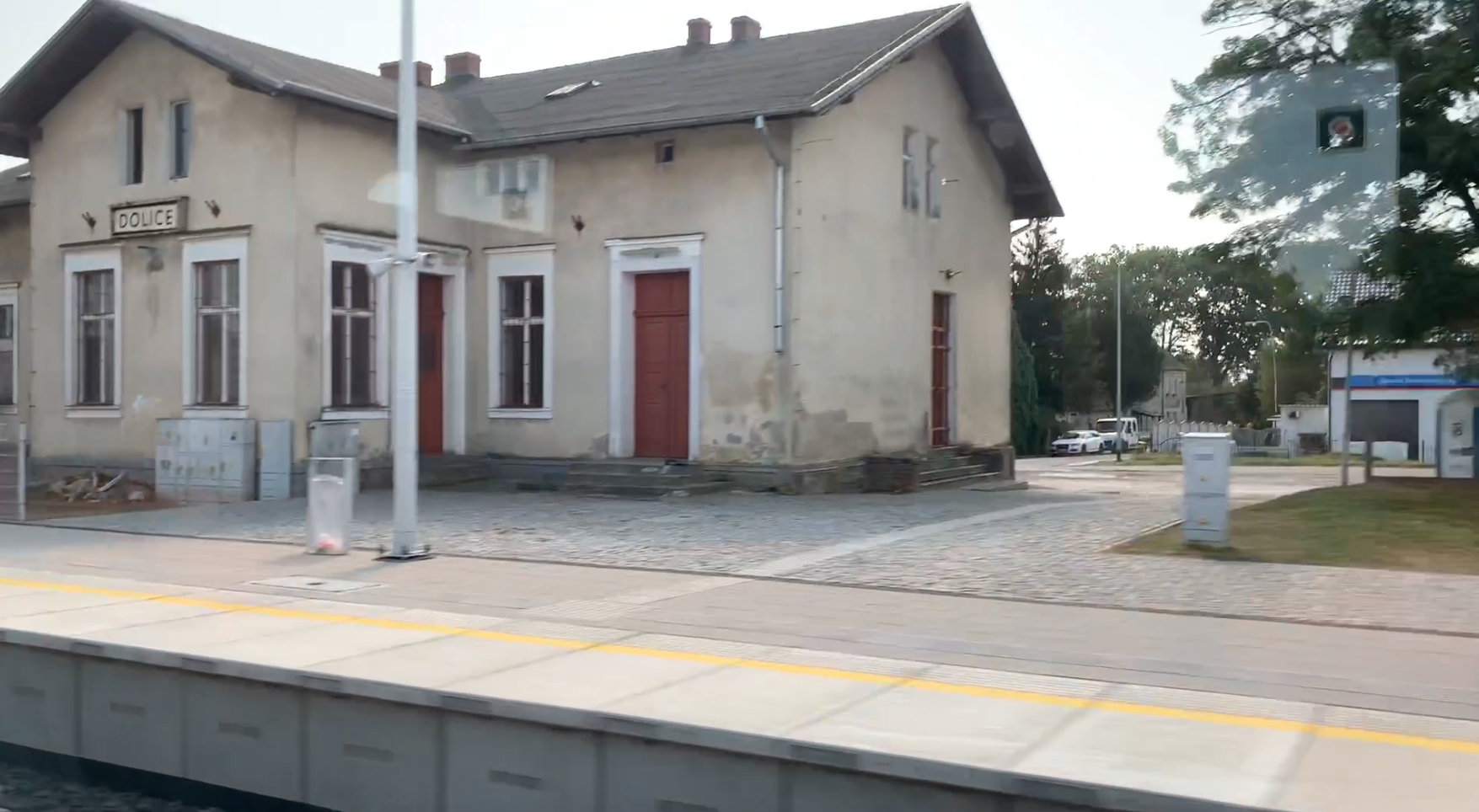
Leave a Reply
You must be logged in to post a comment.